![]() The information provided by our expert should not constitute a diagnosis of your condition. Always consult a medical practitioner or healthcare provider for a formal diagnosis. By making use of this content, you agree that ConceiveEasy and the expert assume no liability.
The information provided by our expert should not constitute a diagnosis of your condition. Always consult a medical practitioner or healthcare provider for a formal diagnosis. By making use of this content, you agree that ConceiveEasy and the expert assume no liability.
Ovulation. Without a doubt, it is the most important part you need to learn in how to get pregnant fast and easy. It is the one true key to conception. If a woman does not ovulate, it is absolutely and completely impossible for her to get pregnant. So, it truly is the key to conceiving. However, ovulation can be pretty confusing, especially if you are new to trying to conceive. This article will go over all the details of ovulation, and explain how to tell when and if you are ovulating. Once you finish reading this, you will be an ovulation expert! So, read on to begin your “ovulation education!” Claim Your 20 Free Ovulation Tests – Click Here
Once you finish reading this, you will be an ovulation expert! So, read on to begin your “ovulation education!”

Ovulation is, literally, when the mature egg is released from the ovaries and pushed down the fallopian tube. The egg travels to the uterus, where it will wait to be fertilized by the sperm. When it is time for ovulation to occur, the uterine lining has already thickened in preparation for the fertilized egg. So, what happens next?
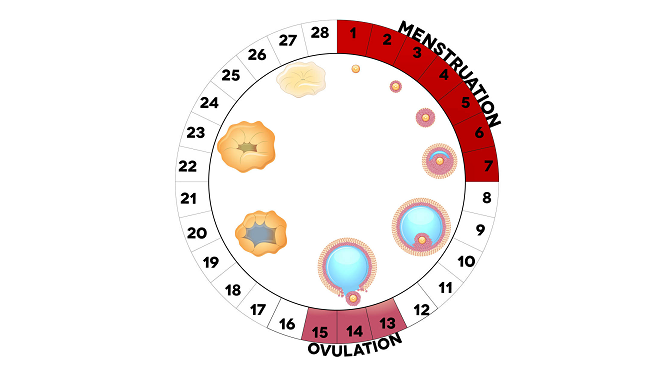
If the egg is fertilized and implants properly, a pregnancy will occur. However, if the egg is not fertilized, the uterine lining will begin to shed, and that is when the menstrual period will occur. This same process happens again and again, month after month. Usually, if a woman has a normal 28-day cycle, her ovulation day will occur around day 14 of the cycle or approximately two weeks after the start of her period. However, no two women have the same cycle, and depending on cycle length, ovulation can occur earlier or later. So yes, you are only going to be fertile a few days of your entire cycle. They should teach this stuff in grade school!
So yes, you are only going to be fertile a few days of your entire cycle. They should teach this stuff in grade school!

There are so many facts about ovulation that most women do not know. Ovulation is so critical when it comes to conception and pregnancy, and if you are trying to conceive, it is very important that women really understand ovulation and know what is going on with their bodies. For example, something that most women don’t know is that ovulation begins around the same time that a girl starts her periods for the first time. Ovulation and menstruation are not the same things, and a lot of women don’t know that you can ovulate without having a period. Likewise, you can have a period without ovulating. The two are not mutually exclusive.
Another fun fact? Usually, the body uses an egg from alternate sides each month.
Once a woman starts ovulating, she will continue to ovulate each month until her body runs out of eggs. Another fun fact? Usually, the body uses an egg from alternate sides each month. For example, one month the egg will come from the left ovary, the next month it will come from the right. However, sometimes, two eggs will be released at the same time. This is where twins come from! This is also the reason why some fertility drugs meant to induce ovulation can make having multiples more likely. This is because the ovaries are stimulated and can produce and release multiple eggs in one months time.

Sometimes, two eggs will be released at the same time. This is where twins come from!
Also important to know is that the body uses the strongest and most viable eggs first. This is the reason why women are more likely to have pregnancy complications and babies with birth defects and other problems as they get older, because the eggs can be damaged by that time. While these may seem like random silly facts, they are actually important tidbits about ovulation that most women don’t know. When it comes to conceiving, the more information you can get, the better off you will be!

The truth of the matter is, if ovulation came along with a black and white, cut and dry time frame that every woman was already aware of, no woman would ever have trouble getting pregnant (and no woman would have a surprise pregnancy either, for that matter!) As it is, figuring out a woman’s ovulation time frame usually requires for her to do a bit of detective work.
In my own personal case, I honestly didn’t realize that there are literally only a few short hours (about a 24 hour window!) in which a woman is actually able to get pregnant. I always just randomly thought that getting pregnant was a “luck of the draw” kind of thing, but that is not the case.
It really is all about the timing, and when it comes down to conceiving, you have to know your body well to really know when you can get pregnant. Luckily, there are many different ways to track ovulation and get to know your body better.
I honestly didn’t realize that there are literally only a few short hours (about a 24 hour window!) in which a woman is actually able to get pregnant.
The average woman has a cycle of around 28 days to 32 days. Day one of the cycle is the first day of a woman’s period. Generally speaking, a woman will usually ovulate around day 14 of her cycle, or two weeks after the beginning of her period. However, this is not at all the rule. Many women have much longer or much shorter cycles than 28 days, and many women, due to a number of issues, ovulate either early or late.
The general time frame for ovulation is usually between day 11 and day 21, depending on a number of factors. Some women don’t even ovulate at all, indicating fertility issues. Even crazier? Some women ovulate some months and not others, off and on. The body really is a complicated thing! It’s amazing anyone ever manages to get pregnant at all!
Even crazier? Some women ovulate some months and not others, off and on. The body really is a complicated thing!

As I mentioned before, finding out when exactly you ovulate can be sort of like detective work. Luckily, there are many tools you can use to crack the case and figure out exactly when ovulation will occur, and when you will have the best chance of getting pregnant. Some of the different ways to track ovulation include: programs and apps, body changes, basal body temperature, and ovulation predictor kits. These methods are all very unique and different, and you can take the time to learn each one and decide which one is right for your particular situation. Let’s go over a few of the most popular methods for tracking ovulation.
Some of the different ways to track ovulation include
• Programs and apps
• Body changes
• Basal body temperature
• Ovulation predictor kits

With all of the technology we have today, it’s no surprise that we have taken tracking ovulation to the next level as well. There are a ton of apps and programs out there designed to help you to track your ovulation and learn about when your most fertile days are. The way these apps work is by having the user enter information each day in which the app keeps track of and then helps to calculate when the most fertile days are.
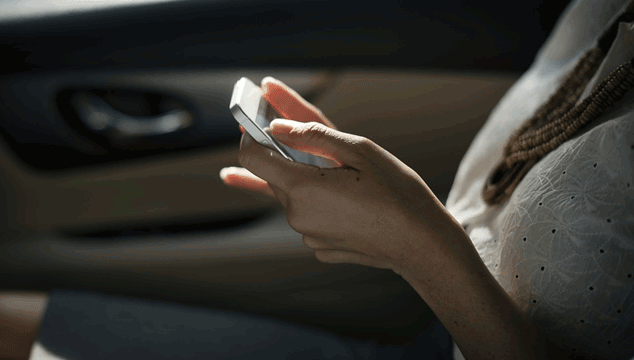
Times are a-changing when even getting pregnant is becoming a high-tech thing!
On most of these apps, you can enter information such as when your period starts, the days you have sex, your cervical mucus and any other symptoms you might be experiencing, and the app can calculate for you and tell you when your fertile days should be. The downside to these apps and programs, however, is that the information that they are giving you is just an estimate because they really have no idea what is going on in your body. However, they are usually good for a guide to go by. These are usually also a good thing to use in conjunction with other methods of tracking ovulation in order to give yourself the best chance of conceiving.

Many women don’t realize that there is a multitude of body changes that can occur around the time of ovulation. In fact, many women feel these body symptoms, like bloating or headaches, and don’t pay any attention to them at all. However, if you pay close attention to your body, you can actually come to know the body signs that will help you to figure out when you are ovulating. Many women don’t even notice these signs or symptoms or notice them consistently.
Pay attention and be on the lookout for slight cramping or pain on one side of the pelvis, near where your ovaries are. This can be an indication that this is the side that is getting ready to release the egg. Also, some light pinkish spotting may occur near the time of ovulation as well. Many women mistake this for an early period and then don’t realize they are pregnant for a long time! Breast tenderness and stomach bloating are also things to look out for. A few women also report having a heightened sex drive as well as a heightened sense of smell, taste or vision as well right before ovulation, due to the rush of hormones.
Many women mistake this ‘implantation bleeding’ for an early period and then don’t realize they are pregnant for a long time!

One of the best and most accurate ways to track your ovulation is to use a basal body thermometer to track your Basal Body Temperature. Your basal body temperature is the lowest temperature of your body in a 24 hour period. To use this method, you can purchase a special basal body thermometer that measures your temperature very precisely. Each day, before you even get out of bed in the morning, you can use that thermometer to take your temperature and chart your results on a temperature chart.
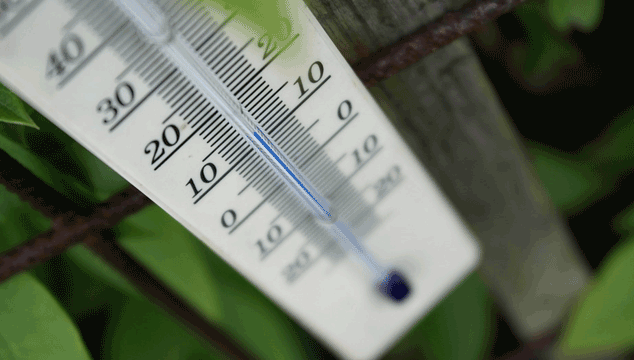
You will see that your temperature stays pretty much the same for every day. However, when ovulation is near, you will see a small spike in your daily temperature, and that is when you can pretty much say that ovulation has occurred when you see the temperature spike for more than 3 days in a row. Doing this method for several months can give you a great idea of when you ovulate. It’s important to track your temperature for several months, however, if you are charting your basal body temperature. This is because it might take that much time to notice a pattern.
When ovulation is near, you will see a small spike in your daily temperature, and that is when you can pretty much say that ovulation has occurred

Probably the easiest way to track ovulation today, are ovulation predictor kits. These kits are sold over the counter and online for very cheap prices, making them a good choice for many women. You can get 20 free ovulation test kits here because you can never have enough OPKs. Stock up on them!
Ovulation Predictor Kits work much like home pregnancy tests, although they are testing for a hormone called the luteinizing hormone, or LH. They use a woman’s urine to detect the LH hormone in the body. There is a test line on each test, along with a colored control line. A woman will test until the test line is the same color or darker than the control line, indicating the surge of the LH hormone.
You can get 20 free ovulation test kits here because you can never have enough OPKs. Stock up on them!
The LH surge takes place around 24-48 hours prior to ovulation, so when you take an OPK test and get a positive result, it is essentially telling you that ovulation will most likely occur within 24 to 48 hours. OPK tests usually come with plenty of test strips so that women can use them all through the month until they get the hang of when their most fertile times might be. You can easily go through 10 or more in a single month!
You can easily go through 10 or more in a single month!
It is important to read the instructions on these tests carefully so that you will always know that you are using them properly. There are lots of instructions when it comes to these tests, such as a certain time of day to test, or a certain amount of time to wait to read the results, so you have to be very careful to make sure that you are doing it right.
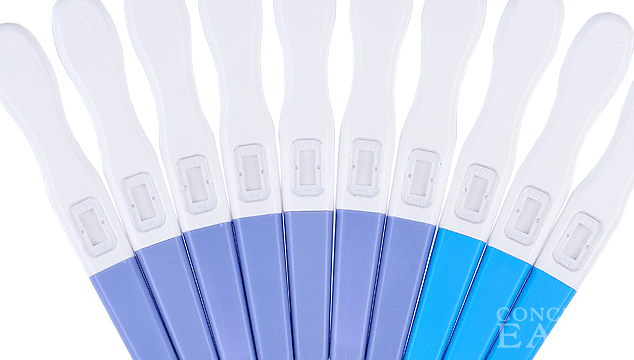

As you can see, there are many different ways to know when you are going to ovulate, and we didn’t even get to cover all of them in this article. There are also ways such as tracking your cervical mucus (hint: you want it to look like egg whites!) and your cervical position (google that one for more info!) that can help you to know when ovulation is going to occur. The bottom line is, there are tons of different options out there for women who are trying to get pregnant, and you just have to find the right one or combination of methods that work best for you.
Knowing when you ovulate doesn’t need to be difficult. It might take a little bit of work at first to get the hang of it and to know exactly what you are looking for, but we are all so lucky that we live in a time that we are able to have so many tools at our disposal to help track ovulation. Once upon a time, women just had to guess about when was the best time for them to get pregnant. These days, we can literally pinpoint just about everything to do with our fertility. So, what are you waiting for? Now, get out there and get to tracking!
So, what are you waiting for? Now, get out there and get to tracking!


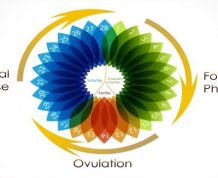

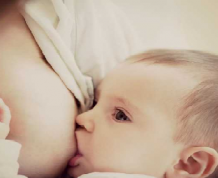





Comments